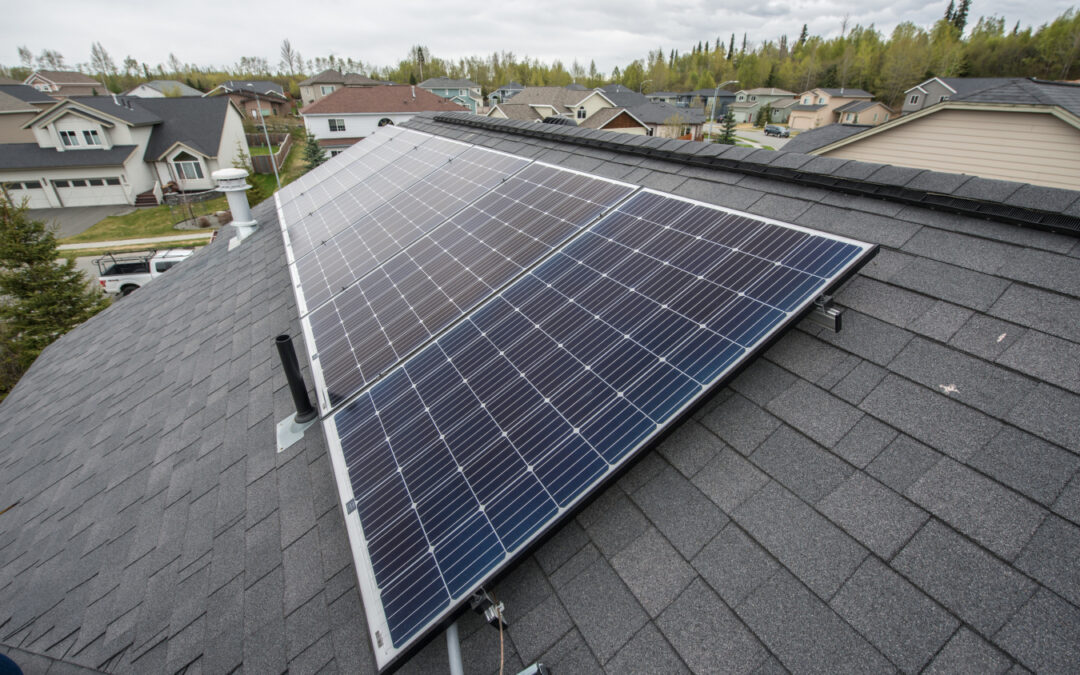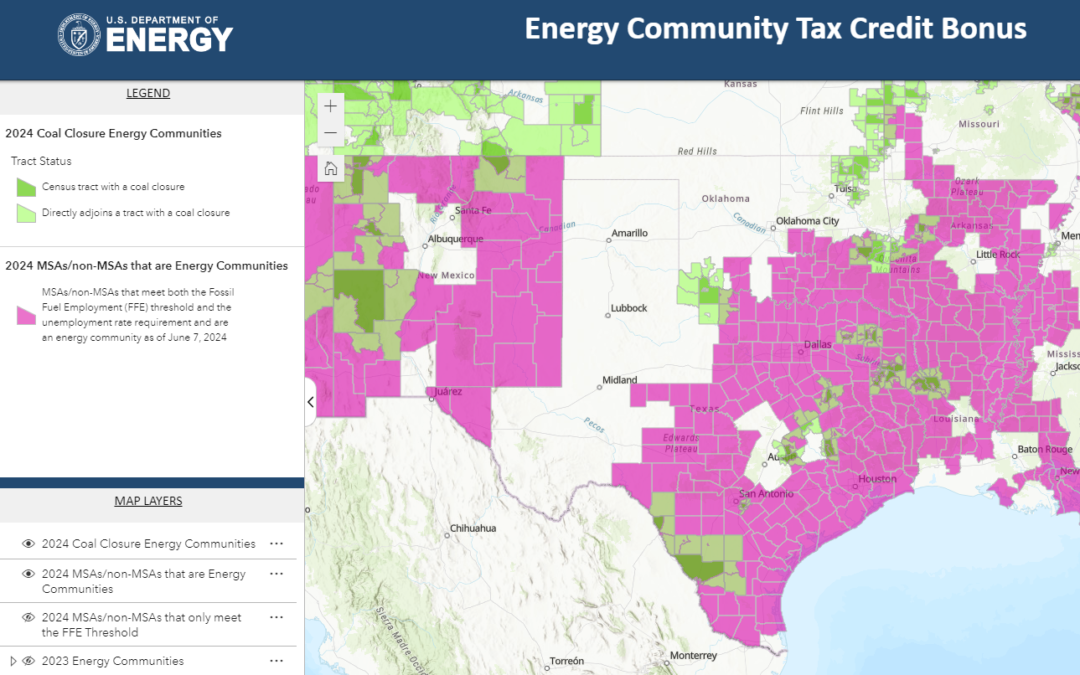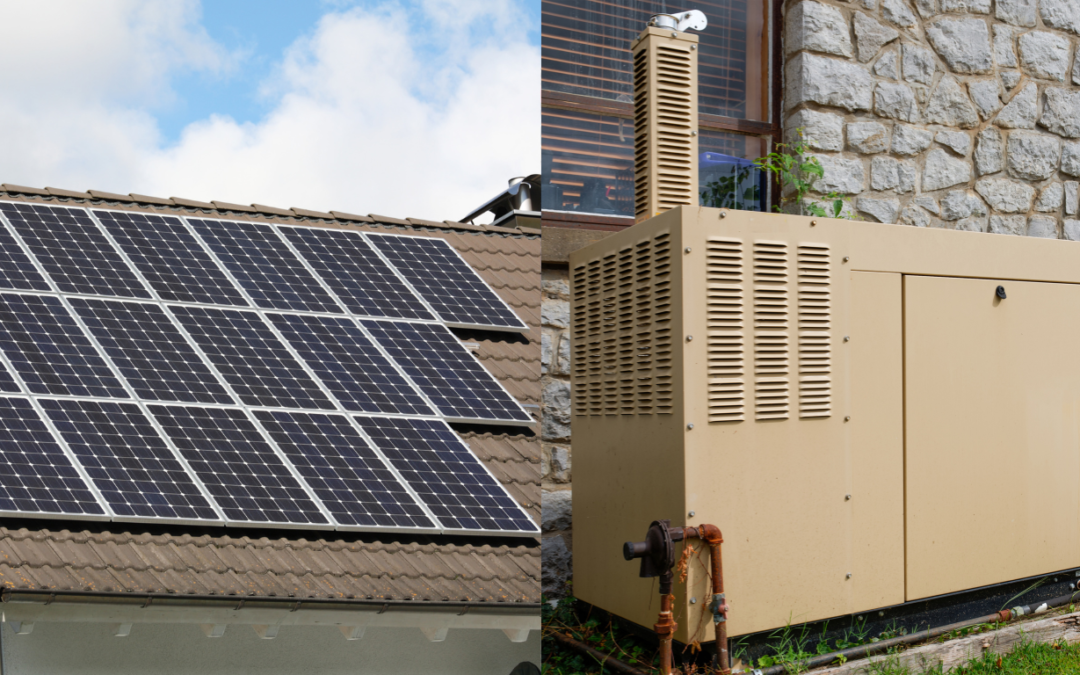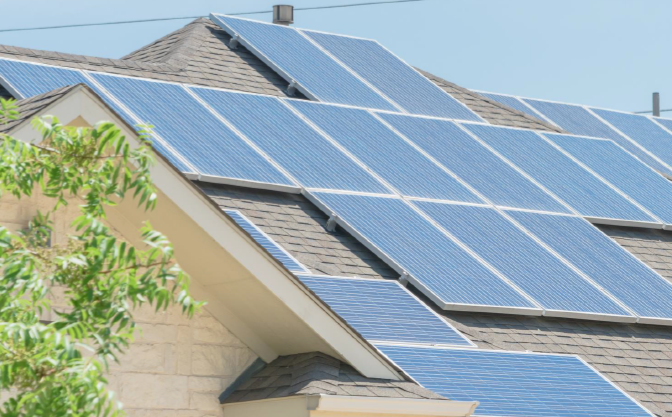
Feb 24, 2025 | Resources
These resources, compiled by the U.S. Department of Energy Solar Energy Technologies Office (SETO), cover a wide variety of topics, from the process of choosing and installing a solar energy system, to understanding how it impacts the value of a home. Learn more below.
Learn how to save on solar and review federal solar tax credit resources.
The U.S. Department of Energy (DOE) Solar Energy Technologies Office (SETO) supports research & development to harness America’s abundant solar energy for secure, affordable, and reliable solar energy.
Learn more about SETO’s work at their events and webinars.

Feb 21, 2025 | Consumer Confidence
A guide for U.S. homeowners on the process of getting rooftop solar panels from the U.S. Solar Energy Technologies Office.
(August 4, 2021)
So you’re thinking about joining the 3 million U.S. homeowners who have gone solar. Solar energy will help you save on your monthly electricity bills and combat climate change, but what needs to happen to get those solar panels on your roof?
View this webpage in Spanish. Vea esta página web en Español.
Along with understanding the solar installation process, being familiar with your individual circumstances, like the age of your roof, can help you be a more informed solar consumer. Here are the steps to take to get powered by sunshine.
- Choose a solar installer. An installer can help you determine if your roof is suitable for solar panels. Start by researching qualified, insured installers online or ask for recommendations from people who have gone solar. Comparison-shop by asking multiple installers to come assess your roof. Make sure your installer is licensed and certified by a reputable organization like the North American Board of Certified Energy Practitioners. When reviewing your contract, make sure you understand the terms and don’t hesitate to ask questions. e la luz del sol.
Note: Your solar installer will guide you through the process and some companies will do everything else for you! But, here’s what else needs to happen:
- Make sure your roof can support solar panels. A solar installer, roofing expert, or structural engineer can help you determine your roof’s solar suitability. It can help to know when your roof was installed or replaced, but if you don’t know and can’t ask the previous homeowners, your local government should have a record of when it issued the building permit. (It can often save you money if you install solar at the same time as a roof replacement.)
- Determine your home’s solar potential. Aside from your roof’s condition, your home’s solar rooftop potential depends on your geographic location, the position of your home in relation to the sun, how much shade you have, and the PV system you and your installer choose. These mapping services and tools can help you find out how much sunlight will reach your solar panels, along with your potential cost savings from going solar, but your installer can assess this for you too. Note that online tools estimate our solar potential using remote data sources, like satellite data. For a detailed evaluation of your solar potential, talk to an installer.
- Calculate your electricity needs. Reviewing your previous electricity bills can help you figure out how much power you need annually and seasonally. This is a good time to do a home energy audit to see whether you need to make any energy-saving home improvements so that you can get the most out of your system. Your installer can look at your bills to help you determine your current and long-term energy needs. Remember to consider any recent or future changes to your home that may affect your usage. For example, you may have just bought new energy-efficient appliances, or you could be planning to buy an electric vehicle that will need charging.
- Evaluate your finance options. You can buy or lease a PV system. Buyers can either purchase a system outright or obtain a solar loan. When you own a system, you receive solar tax credits and incentives, but you won’t if you lease. Some solar loans allow you to take advantage of the federal investment tax credit up front by allowing the loan provider or solar installer to take the credit in exchange for a reduced system cost or loan amount. Leasing a system can go one of two ways: You can pay a leasing company a fixed monthly payment for the use of your PV system, or you can enter a power purchase agreement, meaning you’d buy the electricity your system generates based on a set price per kilowatt-hour.
- Obtain permits and schedule inspections. Give your installer the information they need to obtain the permits and arrange the inspections that your local government requires. The PV system installation generally takes only a few days, but permits and inspections can take weeks to months. It depends on the local regulations in your area. The National Renewable Energy Laboratory’s SolarTRACE tool can give you an idea of how long it may take to complete the permitting, inspection, and interconnection process in your jurisdiction.
If your home is not suitable for rooftop solar, you can still get the benefits of clean energy by investing in a community or shared solar program. By going solar, you can play an active role in achieving the nation’s goal of a carbon-free electricity sector by 2035. For more information, visit the Homeowner’s Guide to Going Solar.
This blog post is part of the Energy Department’s Summer of Solar campaign, which lifts up stories of the diverse Americans who use solar energy and the communities that are making it easier to go solar.
Photo Credit: Residential solar project in Anchorage, Alaska, by Dennis Schroeder / National Renewable Energy Laboratory

Sep 24, 2024 | Resources
This is a summary of publicly available resources as compiled by Solvari Solar. Property owners should refer to the resources linked in this document for the status of any incentives mentioned. This summary does not represent tax or financial guidance in any form. Talk to your certified licensed financial experts for more details on how to leverage these programs to improve your finances.

Sep 24, 2024 | Resources
Should you install a solar hot water or heat pump hot water system for your home? This article from Energy Matters Australia takes a look at the pros and cons of each to help you decide.
Solar hot water systems have been around for almost as long as solar PV systems have been gracing our rooftops. Heat pump hot water systems are a relatively newer technology. With both hot water systems being eligible for federal incentives, and fantastic ways to lower electricity bills and home emissions, which is the better choice? Let’s look at the two different technologies and find out which one you should choose for your home.

Aug 9, 2024 | Txses Impact, Resources
By Mohammad Alkhatib
In the United States, the need for reliable backup power solutions is increasing due to frequent power outages and natural disasters. Solar storage systems and traditional generators are two prominent options for ensuring continuous power supply during outages. This report provides a comprehensive comparison of these two solutions, analyzing their pros and cons, feasibility, and market trends to help homeowners and businesses make informed decisions.
Solar Storage Systems
Pros: Solar storage systems offer several advantages. Environmentally, they produce no emissions, significantly reducing the carbon footprint compared to traditional generators. Users can store excess solar energy generated during the day for use at night or during outages, enhancing energy independence. Over time, solar storage can lead to substantial cost savings on energy bills, and these systems generally require less maintenance compared to generators. Additionally, solar storage systems operate silently, avoiding noise pollution.
Cons: Despite these benefits, solar storage systems come with some drawbacks. The most notable is the high initial cost, as they require a significant upfront investment for solar panels and storage batteries. Their efficiency can also be affected by weather conditions and geographic location. Furthermore, the energy capacity of solar storage is limited, which may not be sufficient for extended outages.
Feasibility (Price Analysis): The initial investment for solar storage systems, including costs for solar panels, inverters, and batteries, ranges from $8,500 to $10,000 per unit for systems like the Tesla Powerwall 2. However, federal and state incentives, tax credits, and rebates are available for solar installations, which can significantly reduce the overall cost. Over the system’s lifespan, users can expect long-term savings due to reduced utility bills.
Market Trends: The market for solar storage is growing rapidly, driven by increasing adoption rates and technological advancements. Leading companies in the industry include Tesla, LG Chem, Sonnen, Panasonic, and Enphase.
Generators
Pros: Generators provide immediate power during outages and are capable of supplying power for longer periods and larger loads. They have lower initial costs compared to solar storage systems and are relatively easy to purchase and install. Many generators are portable, allowing for flexible usage in different locations.
Cons: However, generators have several disadvantages. They typically run on fossil fuels, producing emissions and contributing to environmental pollution. Generators require a continuous supply of fuel, which can be expensive and logistically challenging. They are also noisy and require regular maintenance and fuel management.
Feasibility (Price Analysis): Generators are generally more affordable upfront, with costs ranging from $1,000 for portable models to $7,000 for whole-house models. However, they involve ongoing operational expenses for fuel and maintenance. The reliability of generators can vary based on fuel availability, especially during extended outages.
Market Trends: The generator market is sizeable and expected to grow, with innovations focusing on improving efficiency and reducing environmental impact.
Comparison and Conclusion
Suitability: Solar storage systems are ideal for environmentally conscious users with long-term savings goals. They provide a sustainable energy solution but come with higher initial costs and limited energy capacity. Generators, on the other hand, are suitable for those needing immediate, high-output power regardless of environmental impact. They are more affordable upfront but have higher long-term operational costs due to fuel and maintenance needs.
Cost-Benefit Analysis: Over time, solar storage systems offer better long-term savings despite higher initial investments, thanks to reduced energy bills and available incentives. Generators, while cheaper initially, incur ongoing costs that can add up over time.
Future Outlook: The future of backup power solutions is likely to see a shift towards more sustainable options like solar storage, driven by increasing environmental awareness and technological advancements. This shift is expected to be bolstered by government incentives and the rising costs of fossil fuels.
References
- Brentley, A. (2024, August 19). Solar battery backup vs. generators. GreenLancer.
- Sunnova. (2024, July 12). A home backup generator or solar battery? Sunnova.
- U.S. Department of Energy. (2021, November 22). Should I Get Battery Storage for My Solar Energy System? Energy.gov.
- BloombergNEF. (2023, March 21). 1H 2023 Energy Storage Market Outlook. BloombergNEF.

Jul 16, 2024 | Solar News of Note, Txses Impact, Resources
TXSES commissioned a new study quantifying grid-stabilizing value and cost savings of rooftop solar
For Immediate Release: July 16, 2024
Contact: José Medina, jmedina@citizen.org
AUSTIN, Texas—Energy supplied by rooftop solar is much more valuable than the average kilowatt-hour sent to the ERCOT grid by other means, finds a new study commissioned by the Texas Solar Energy Society (TXSES) and released today by the Texans for Local Energy Freedom Coalition.
The study, Value of Residential Solar in Texas, assesses the technology’s benefits to this fast-growing state.
The study shows that the overall value of distributed solar in ERCOT will be about 27¢/kWh, with 15¢/kWh realized in the generation, transmission, and distribution system and 12¢/kWh realized through air pollutant and emission reduction benefits. Rooftop solar is valuable because it mitigates constraints on the generation and transmission system, reduces harmful emissions from air pollutants, and stimulates the economy through local job creation. Further, when paired with energy storage, it can improve grid resiliency and reliability during severe weather events.
The study details how rooftop solar:
- Provides cost-savings to Texans within the ERCOT electric grid, including reducing the need for new costly infrastructure needed to meet electricity demand
- Improves public health by reducing air pollution from combustion-fired electricity generation, and lowering greenhouse gas emissions
- Additional benefits that are real, but not calculated, include job growth, boosts to local economies, alleviating poverty, and energy insecurity
“As Texas grows and the demand for electricity increases, our analysis demonstrates the value that customer-sited solar brings to Texas.” said Anirudh Kshemendranath, a Senior Consultant with Dunsky Energy + Climate Advisors, the firm commissioned by TXSES for the study. “Customer-sited solar has the potential to alleviate grid constraints and reduce costs for all ratepayers and if valued correctly, can be an important tool to support energy reliability and affordability for all Texans.”
Another recent study details how a patchwork of policies at municipal, cooperative and monopoly investor-owned electric utilities across the state chronically undervalues energy sent to the grid from rooftop solar installations. The same is true for competitive retail electric providers in Texas. Without a fair value of solar, homeowners may decide rooftop solar is not worth the investment, or decide against adopting the technology altogether.
“I first installed solar at my home in 2012,” said Larry Howe, a Plano homeowner. “It was a great decision then, but honestly, it’s harder and harder for folks to justify today given how solar policies vary depending on where you live and which utility covers your area. What a homeowner can get back for the electricity they don’t use is a big factor in their decision to make the financial investment in rooftop solar. Homeowners like me need more certainty that solar compensation rates will be fair the day their panels are installed and 10 or 20 years from now.”
As ERCOT faces challenges maintaining reliability and as market prices increase, many Texas utilities and retail electric providers have slashed the rates they pay customers for energy from rooftop solar, and some have adopted additional monthly fees for customers with rooftop solar. These changes provide a financial disincentive for customers considering rooftop solar.
“If state leaders are serious about keeping the grid stable and affordable, it’s time for them to step in and adopt statewide policies to ensure fair compensation for homeowners and businesses that supply energy from solar installations to the distribution grid,” said Alison Silverstein, a former advisor for the Public Utilities Commission of Texas. “This state had a deadly power outage during Winter Storm Uri and several close calls that we will continue to have for the foreseeable future. Rooftop solar is a key part of avoiding an energy crisis. We just need some regulatory certainty coming from Austin.”
In addition to rising demand, Texans have faced increasing costs to power their homes and an electric grid vulnerable to extreme weather events. Winter Storm Uri in February 2021 and the recent Hurricane Beryl left millions without power. The possibility of targeted blackouts has become a yearly occurrence during the summer months of dangerous heat. Supporting rooftop solar can lower some risks and keep Texas powered and running.
###
About the Texans for Local Energy Freedom Coalition
The Coalition was created by a group of non-partisan organizations — Texas Solar Energy Society, Solar United Neighbors and Public Citizen — to explore possible solutions to what utilities need to reimburse rooftop solar owners to offset the cost of solar being fed back into the grid. The discrepancy and unfairness that homeowners are being paid is sending the wrong market signal for homeowners to adopt solar and the possibility of adding storage to their homes. This discourages homeowners and commercial applications when the state needs ALL options and the grid needs power.






